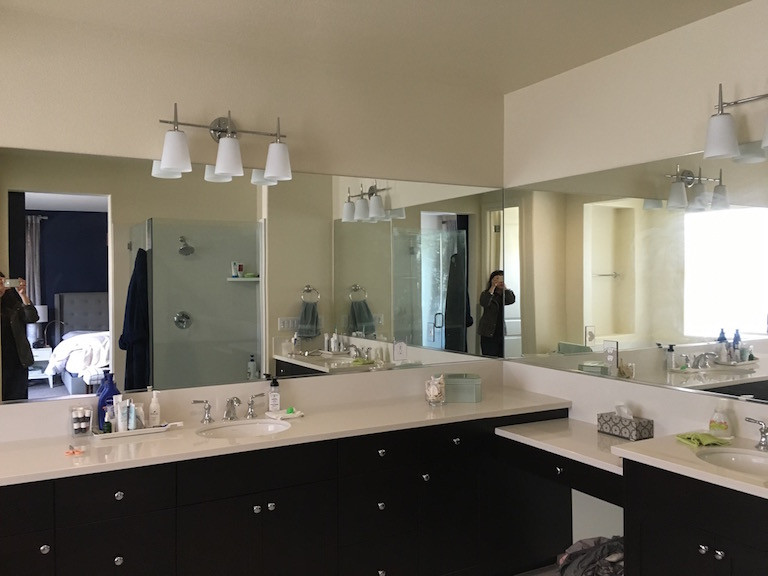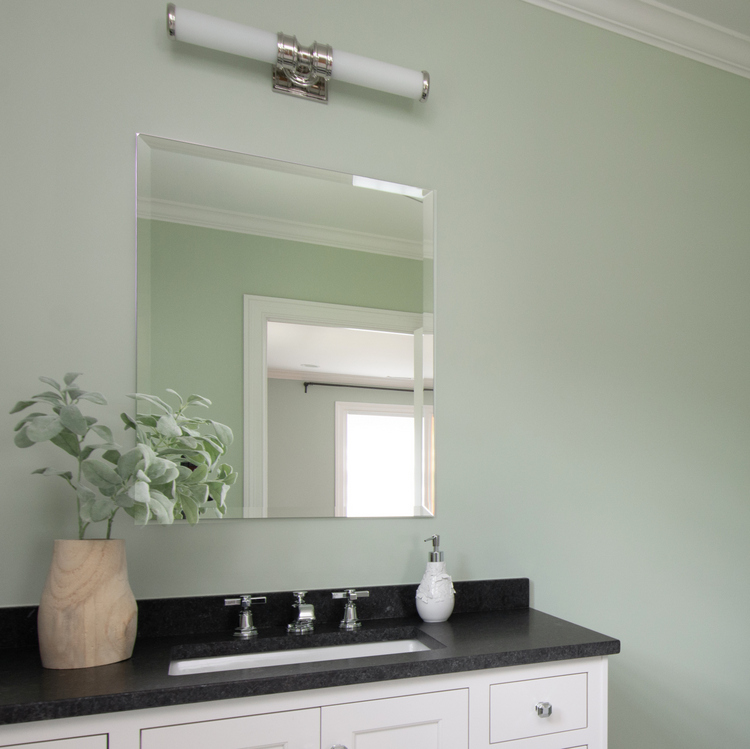Eggshell Paint Properties in Bathrooms

Eggshell paint is a popular choice for bathrooms due to its subtle sheen and ability to hide minor imperfections. However, it’s important to consider its properties in high-moisture environments to ensure it performs well and lasts.
Durability in Bathrooms
Eggshell paint offers a balance between durability and a soft finish. It is generally considered more durable than flat paint, making it a suitable choice for areas with moderate traffic and potential for spills or splashes. However, it’s not as durable as semi-gloss or gloss paints, which are more resistant to scrubbing and moisture. In bathrooms, eggshell paint can withstand occasional cleaning and light scrubbing, but frequent heavy cleaning or exposure to excessive moisture can lead to wear and tear.
Cleaning and Maintenance, Can you use eggshell paint in a bathroom
Eggshell paint is relatively easy to clean. It can be wiped down with a damp cloth and mild detergent for regular maintenance. For tougher stains, a gentle scrubbing with a soft-bristled brush and a mild cleaner may be required. However, avoid using harsh chemicals or abrasive cleaners, as they can damage the paint surface. It’s crucial to ensure the paint is completely dry after cleaning to prevent mildew growth.
Moisture Resistance
Eggshell paint offers moderate moisture resistance. It is less prone to water damage than flat paint but not as resistant as semi-gloss or gloss paints. While it can withstand occasional splashes and humidity, prolonged exposure to moisture or water can lead to peeling, cracking, or mildew growth.
Practical Considerations for Using Eggshell Paint in Bathrooms

Eggshell paint, with its subtle sheen and ability to hide minor imperfections, offers a balanced aesthetic for bathrooms. However, its practicality in this high-moisture environment warrants careful consideration. This section explores the pros and cons of eggshell paint in bathrooms, offering design ideas and alternative paint finishes for a more suitable solution.
Pros and Cons of Eggshell Paint in Bathrooms
Eggshell paint presents both advantages and disadvantages for bathroom use. Its low sheen offers a soft, elegant look, but its susceptibility to moisture and stains may pose challenges.
- Pros:
- Aesthetic Appeal: Eggshell paint provides a soft, elegant look, complementing various bathroom styles. Its subtle sheen hides minor imperfections, creating a smooth and polished finish.
- Easy Application: Eggshell paint is relatively easy to apply, allowing for a smooth and even finish with minimal brushstrokes.
- Wide Color Range: Eggshell paint is available in a wide range of colors, providing ample options to match any bathroom design scheme.
- Cons:
- Moisture Sensitivity: Eggshell paint is more susceptible to moisture than higher-sheen finishes, making it prone to mildew and mold growth in humid environments.
- Staining: Eggshell paint is less resistant to stains than other finishes, making it difficult to clean spills and splashes.
- Durability: Eggshell paint is less durable than higher-sheen finishes, making it more prone to scratches and scuffs.
Designing a Bathroom with Eggshell Paint
To effectively incorporate eggshell paint in a bathroom, consider factors like lighting, ventilation, and the overall design scheme.
- Lighting: Bright, natural light can help to minimize the appearance of imperfections and enhance the overall aesthetic of eggshell paint. Consider using large windows or skylights to maximize natural light.
- Ventilation: Adequate ventilation is crucial to prevent moisture buildup and reduce the risk of mildew and mold growth. Ensure your bathroom has a well-functioning exhaust fan and consider opening windows for natural ventilation when possible.
- Design Scheme: Eggshell paint works well in bathrooms with a minimalist or modern design aesthetic. Its soft sheen complements sleek fixtures and clean lines, creating a sophisticated and calming atmosphere.
Alternative Paint Finishes for Bathrooms
While eggshell paint can be used in bathrooms, alternative finishes offer better moisture resistance and durability, making them more suitable for this high-moisture environment.
- Semi-Gloss Paint: Semi-gloss paint offers a higher sheen than eggshell, making it more resistant to moisture, stains, and scuffs. It’s a good option for areas prone to splashes and spills, such as around the sink and shower.
- Gloss Paint: Gloss paint provides the highest sheen, offering excellent moisture resistance and durability. It’s ideal for high-traffic areas and surfaces that require frequent cleaning, such as shower stalls and bathtub surrounds.
- Matte Paint: Matte paint has a flat finish, making it less reflective than other options. While not as moisture-resistant as semi-gloss or gloss, it can still be used in bathrooms with adequate ventilation and proper care.
- Epoxy Paint: Epoxy paint is a highly durable and moisture-resistant option, making it ideal for bathroom floors and countertops. It forms a hard, non-porous surface that is easy to clean and maintain.
Applying Eggshell Paint in Bathrooms: Can You Use Eggshell Paint In A Bathroom

Applying eggshell paint in a bathroom requires careful preparation to ensure a smooth and long-lasting finish. This involves cleaning the surface, repairing any damage, and priming the walls before applying the paint.
Preparing Bathroom Surfaces for Painting
Proper preparation is crucial for achieving a professional-looking finish and ensuring the paint adheres well. This involves a multi-step process:
- Remove Existing Paint and Wallpaper: If the bathroom walls are already painted, remove any loose or peeling paint using a scraper or paint stripper. If there is wallpaper, carefully remove it using a steamer or wallpaper remover.
- Clean the Surface: Thoroughly clean the walls using a mild detergent and water. This removes dirt, grease, and grime that can hinder paint adhesion. Rinse the walls with clean water and allow them to dry completely.
- Repair Cracks and Holes: Use a patching compound or spackling paste to fill any cracks, holes, or imperfections in the walls. Allow the patching compound to dry completely before sanding it smooth with fine-grit sandpaper.
- Sand the Surface: Lightly sand the entire surface of the walls using fine-grit sandpaper. This creates a smooth surface for the primer and paint to adhere to. Remove any dust with a damp cloth.
- Prime the Walls: Apply a primer specifically designed for bathrooms to the walls. This helps seal the surface and provides a better base for the eggshell paint to adhere to. Allow the primer to dry completely before painting.
Applying Eggshell Paint in Bathrooms
Applying eggshell paint in a bathroom requires specific techniques to ensure proper coverage and a smooth finish.
- Use a High-Quality Brush or Roller: A high-quality brush or roller is essential for applying eggshell paint evenly. A brush is ideal for corners and edges, while a roller is best for larger areas. Choose a roller with a nap length appropriate for the texture of the bathroom walls.
- Apply Thin Coats: Apply thin coats of eggshell paint to the walls, allowing each coat to dry completely before applying the next. This prevents paint from dripping or running, ensuring a smooth and even finish.
- Avoid Overlapping: Avoid overlapping wet paint, as this can cause streaks or unevenness. Apply the paint in smooth, even strokes, working from top to bottom.
- Clean Up Immediately: Clean any spills or splatters immediately with a damp cloth or sponge. Once the paint dries, it becomes more difficult to remove.
Essential Tools and Materials for Painting a Bathroom
| Tool/Material | Description |
|---|---|
| Eggshell Paint | A high-quality eggshell paint specifically designed for bathrooms, providing a durable and washable finish. |
| Primer | A primer designed for bathrooms, creating a smooth and sealed surface for the paint to adhere to. |
| Paint Brush | A high-quality brush with soft bristles, ideal for corners, edges, and detailed areas. |
| Paint Roller | A roller with a nap length appropriate for the bathroom wall texture, providing even coverage. |
| Paint Tray | A tray with a liner to hold the paint and allow easy application with the roller. |
| Paint Stir Stick | A stick for mixing the paint thoroughly before and during application. |
| Drop Cloth | A cloth to protect the floor and surrounding areas from paint spills and splatters. |
| Painter’s Tape | Tape for masking off areas that should not be painted, creating clean lines. |
| Sandpaper | Fine-grit sandpaper for smoothing out imperfections and preparing the surface for painting. |
| Patching Compound or Spackling Paste | A compound for filling cracks, holes, and imperfections in the walls. |
| Cleaning Supplies | Detergent, water, and cleaning cloths for cleaning the surface before painting. |
Can you use eggshell paint in a bathroom – Eggshell paint is a popular choice for bathrooms due to its soft sheen and easy cleanability. However, if you’re dealing with limited space, finding a compact paper towel holder for small bathroom can help maintain a clutter-free aesthetic. This allows the eggshell paint’s subtle sheen to truly shine, creating a visually appealing and functional space.
Eggshell paint is a popular choice for bathrooms due to its durability and subtle sheen. However, if you’re battling a persistent infestation of very small flies in your bathroom , it’s important to address the root cause before painting. These tiny pests are often attracted to moisture and decaying organic matter, so thoroughly cleaning and drying the bathroom is crucial.
Once you’ve tackled the fly problem, you can confidently apply your eggshell paint for a fresh and clean look.